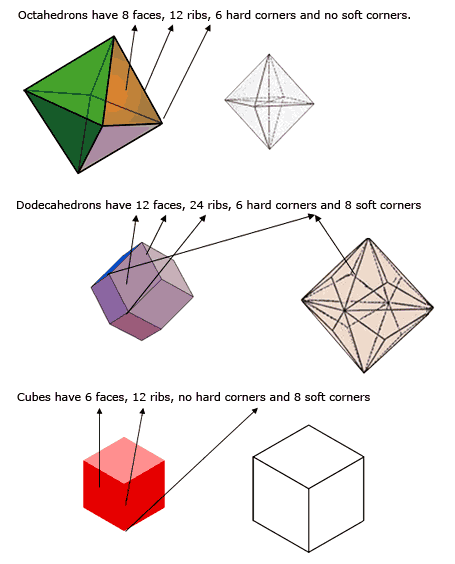There are three basic forms of diamonds namely Octahedrons, Cubes and Dodecahedrons. Diamonds crystallize either as octahedrons or cubes; this depends on the conditions at which the diamond is formed.
Primarily, diamonds form in an octahedral pattern, (hence the primary growth pattern). Then due to a change in conditions where they are formed, this results in a change in the growth pattern. Therefore, Cubic growth is the Secondary growth pattern of diamonds. Because of this factor, cubes have a tendency of inverted or concaved faces and a thick surface layer which makes it very difficult to see inside the diamond.
As a result, cubes are sorted and valued separately. Thus, during manufacturing, the quality of cubes tends to deteriorate and the colour also changes quite often, atleast studies have shown. Botswana’s Jwaneng Mine, the world’s richest mine, is also commonly known for producing cubes.
Dodecahedron, also known as rhombic dodecahedron, is another form of diamonds which result from resorption or resolution.
Diamonds, as crystals, have symmetrical faces and fall under isometric/ cubic system. They have ribs – where two faces meet, hard corners – where four ribs meet and soft corners – where three ribs meet.

